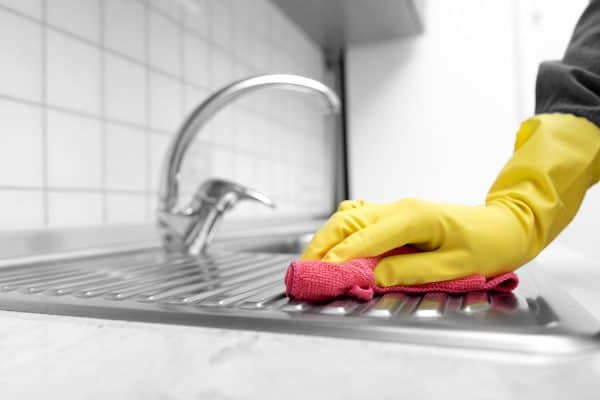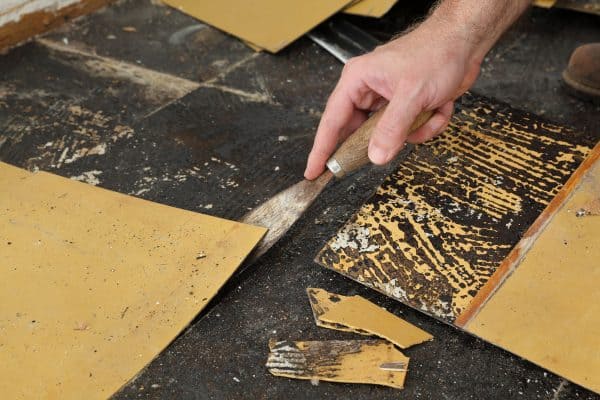Wood decks are beautiful; they have a natural look that everyone loves. However, maintaining them is a different beast. A pressure washer makes cleaning less demanding, but using the wrong PSI can ruin the deck. It raises the question, how much PSI do you need? If that's your concern, you've come to the right place!
The first detail you want to know is the wood your deck is made from.
Softwoods can handle around 500-600 PSI. If your deck uses hardwood, it should be able to take roughly 1200-1500 PSI.
Before cleaning, test an inconspicuous area to ensure it won't damage the boards.
Pressure washing makes cleaning easy. But, it comes with some risks. There are more details to discuss if you want a damage-free cleaning. We'll go over some rules to follow. If you'd like to learn more on this topic, keep reading.
![Cleaning terrace with a pressure washer wood deck floor, How Much PSI To Clean Wood Deck [Pressure Wash Explained]](https://homedecorbliss.com/wp-content/uploads/2022/09/How-Much-PSI-To-Clean-Wood-Deck-Pressure-Wash-Explained.png)
Pressuring Washing A Wooden Deck
Pressure washing is a job that requires extensive knowledge. If you don't know how to use one, it will damage the material you use it on. Yes, that includes wood.
Let's start by clarifying what you mean by cleaning. Some people approach cleaning as stripping boards of dirt, algae, and buildup; others see it as starting with a clean slate.
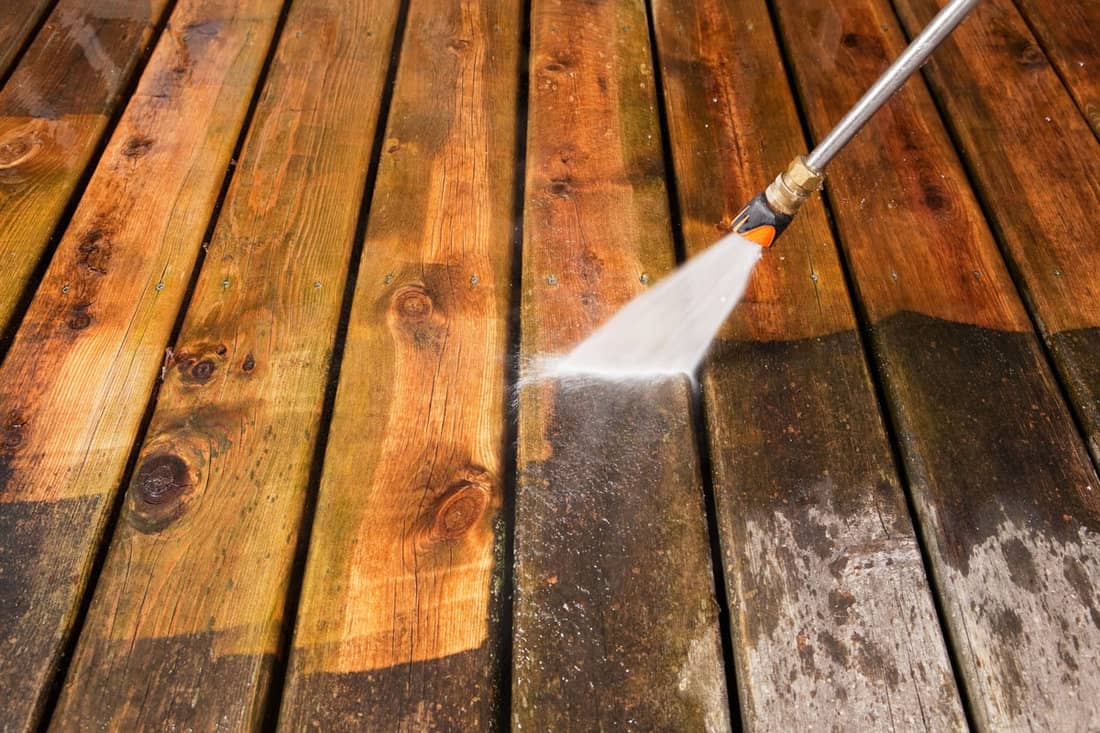
In other words, they're going as far as stripping the wood's finish and paint along with everything else.
This way, they can apply a new finish to make it look as good as new. Unfortunately, even a gentler PSI setting will remove the finish and paints. So, be prepared to apply a new stain on the deck after it dries.
Wood Material
We may include affiliate links and curated AI content to highlight top design styles.
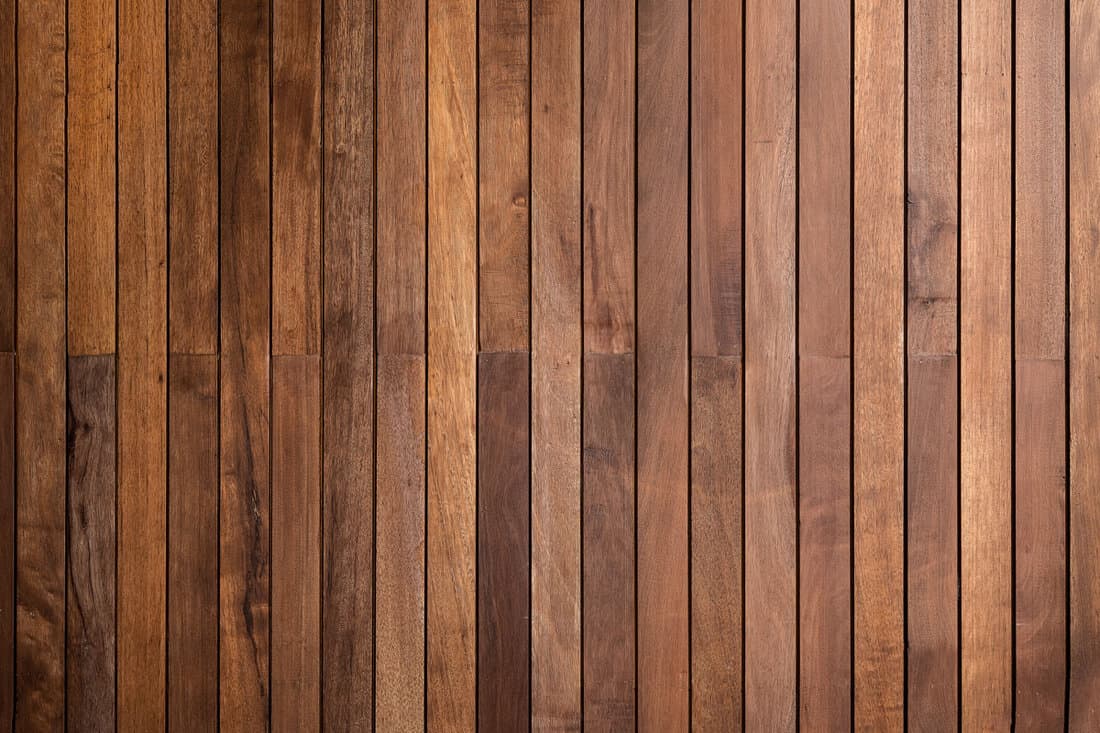
Now we have a clear idea of how much a pressure washer will clean. The next step is to consider the type of wood you're cleaning. Does your deck use hardwood or softwood?
Some common hardwood species used for decks are Teak, Ipe, Cherry, and Oak. The species used for softwood decking are Pine, Fir, Spruce, and Cedar.
Hardwoods are more durable than softwoods. Therefore, they can take more pressure. You'll have to handle softwood decks with care.
Water naturally raises the grain of the wood. Since pressure washers use pressure and water, it can heighten that problem.
For this reason, you'll want to use around 500-600 PSI for softwood decks. Hardwood decks can take a range of 1200-1500 PSI.
Of course, you'll want to test it in a random spot first to see if the higher PSI settings are too aggressive for the boards.
Some professionals would recommend using up to 2400 PSI. However, professionals already have tons of experience working with a pressure washer. If it's your first time using one, use a lower setting.
This way, you can make a mistake without doing too much damage to the boards. Working with a higher PSI will be less forgiving.
Pressure Washer Types

If you don't already own a pressure washer, it's important to learn the type you can use. You can rent one at your local Home Depot or Lowes.
But—before you head to the store—you shouldn't go there with the mindset of choosing the most powerful one available.
Gas-powered pressure washers are the most powerful machines you can rent. However, power isn't necessary for washing a deck. For this reason, go with an electric pressure washer.
Electric pressure washers operate within the PSI range you want to use for cleaning a wood deck. Home Depot also recommends using a higher PSI range to clean decks. They suggest using around 2,000-3,000.
Electric pressure washers are powerful enough to achieve this. However, try the lower PSI ranges first. Once you're comfortable with the pressure washer, you can try experimenting with the PSI.
Pressure Washer Tips
Now it's time to consider the pressure washer tip for the job. You can't use any tip you put your hands on first. They have their purpose.
Using the wrong tip can leave heavy marks on the wooden boards. Here's an example of the damage it can cause:
As you can see, the tip makes a difference. It can even cut into the wood using a low-angle nozzle. In general, you'll want to use the 25-degree nozzle. If you want to play it safe, use the 40-degree.
The 25-degree nozzle is good at sweeping away dirt, algae, etc. It's the attachment most professionals use to clean decks, driveways, and sidewalks. The 40-degree nozzle is a close second.
It uses a wider spray. Therefore, it's more of a forgiving nozzle to use. You can use it to become more comfortable with using a pressure washer. Once ready, switch to the 25-degree to start the actual cleaning.
Pressure Washer Rules
Finally, let's go over the rules of pressure washing. First, it's important to note that pressure washers are nothing like hoses. So, you can't expect to use it like one.
If you do, the wood boards will end up worse for wear. There are three words to remember when using a pressure washer—keep it moving!
Avoid letting the nozzle hover over one spot for too long. Otherwise, you're going to raise the grain. Once the boards dry, the damage will be noticeable.
Keeping A Distance
Secondly, you should create distance between the nozzle and the wood deck. The video above shows the damage it can do up close. Start the cleaning at least 12-18 inches away from the surface to play it safe.
If it's not giving desired results, start moving it closer. However, keep a close eye on the boards. Once the distance between the board and the nozzle reaches six inches, you'll need another method to clean the stubborn area.
Technique
As mentioned, start in a small inconspicuous area. You'll need to practice your technique before cleaning the whole deck. Otherwise, your mistakes will be obvious.
Long strokes are the best way to get good results. Move the nozzle at a steady pace; of course, go with the grain of the wood. Lastly, keep the nozzle at a consistent distance throughout the entire stroke.
With all of this in mind, you should be able to restore your wooden deck. It won't have to look dull anymore! In any case, here's a video demonstrating the mistakes to avoid and how to correct them:
Sanding
Since water naturally raises the grain of the wood, you can expect some splintering after the job is over. Of course, no one wants to look at a splintered deck. So, your work is not over after pressure washing.
You'll need to sand the area to make it flat again. Sanding will also allow stain or seal to soak in better. If you need to sand the surface, use 60-80 grit sandpaper.
Of course, some decks might be larger than others. For this reason, you can also use an orbital sander with a 5" pad.
However, keep some sandpaper on hand. You can use it to reach the nooks and crannies that an orbital sander won't get.
Can You Pressure Wash a Deck Too Much?
Pressure washing makes cleanings faster and more convenient. However, it comes with some disadvantages. As mentioned, board splintering is one of them.
Another disadvantage relates to the stain and finish of your deck. If you don't intend to restain the deck, you will have to reconsider after finishing the job. Pressure washers are effective at removing things from surfaces—sometimes too effective.
It can also damage items nearby chemically. That's if you plan on using chemicals with the pressure washer. In most cases, the chemicals are necessary to remove the grime as effectively as possible.
However, the chemicals are also effective at killing nearby flowers and shrubbery. If your deck is near plants, it's essential to cover them beforehand. Otherwise, it will cause accidental damage from splashing.
Why Is My Deck Fuzzy After Pressure Washing?
There are many reasons why the deck could become fuzzy after pressure washing. As mentioned, you can expect some splintering. However, fuzziness doesn't fall into this category.
Fuzziness is a small problem; it might not be a problem at all. Some professionals suggest it's a dead outer layer of wood that pressure washing removes. If you don't like the look of it, you can sand it.
Otherwise, it will disappear by itself. It takes about two to three weeks for it to do this. If you can't wait that long, you could also apply a sealer over it.
It's not stopping you from doing anything. Therefore, it's a small inconvenience.
In Closing
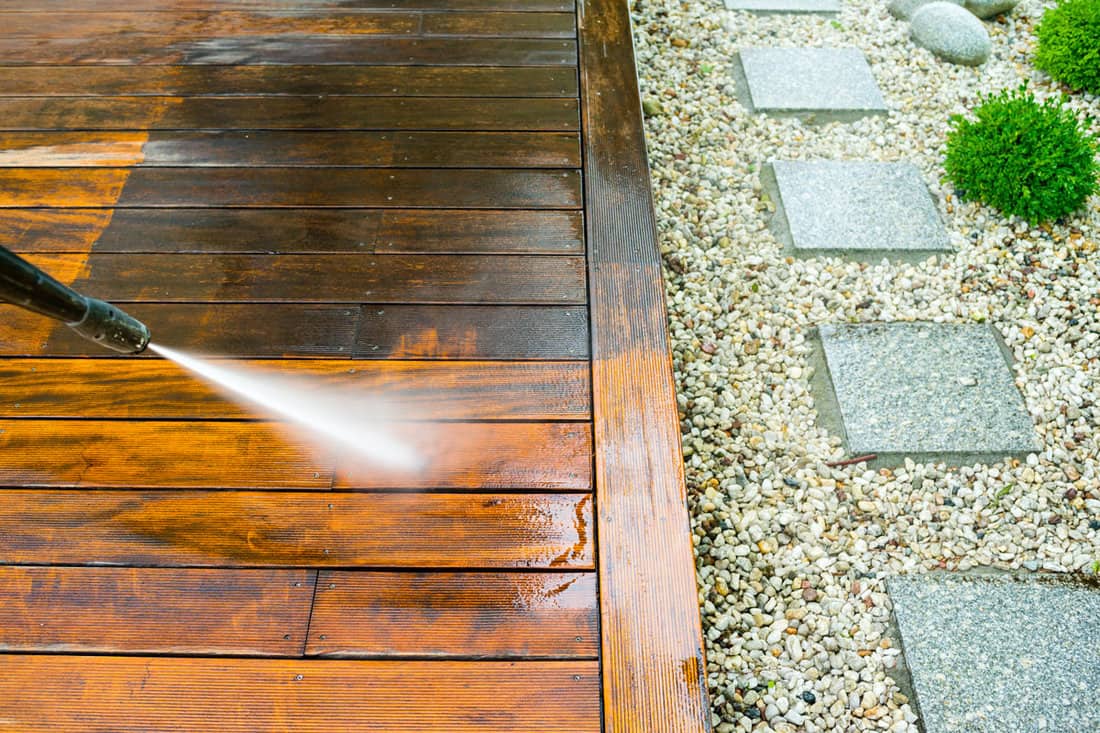
Cleaning isn't always easy. As we can see, pressure washing comes with some disadvantages. You need to follow a lot of rules to make it work. Otherwise, your wood deck will come out worse for wear. We hope you found this informative.
Before you go, do you have other wooden deck concerns? Are you wondering how long it will take to dry after cleaning? To learn more, check out:
How Long Does It Take A Wood Deck To Dry?
Is the deck splintering? We can show you how to fix it! For more information, check out:

